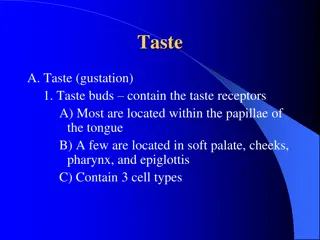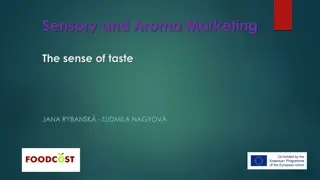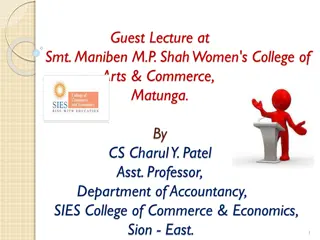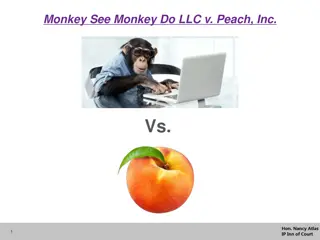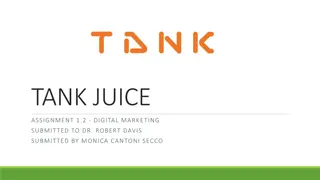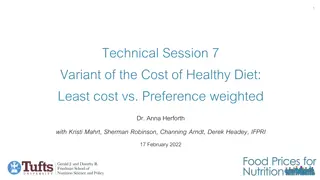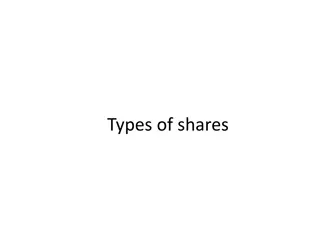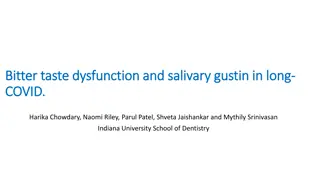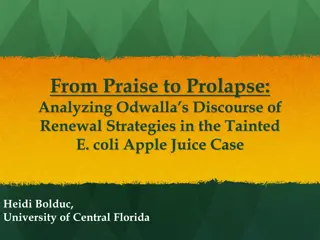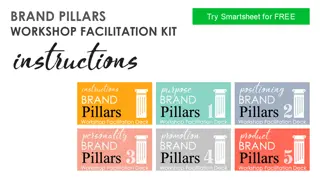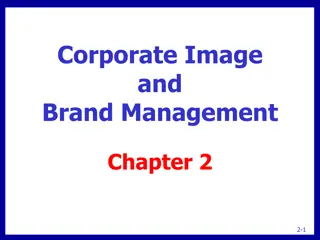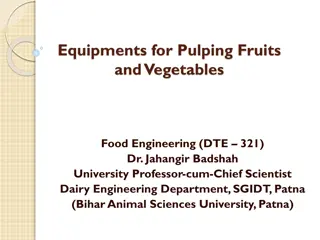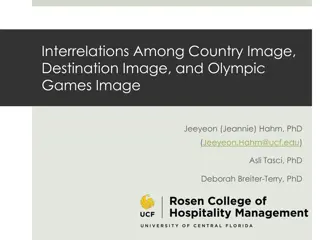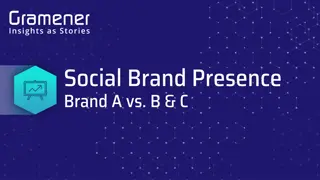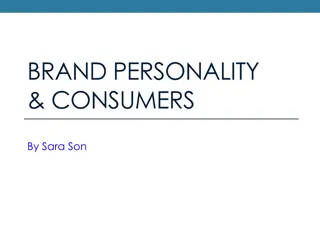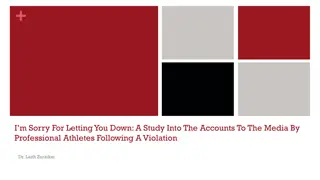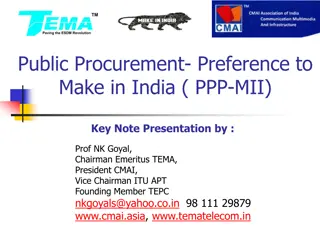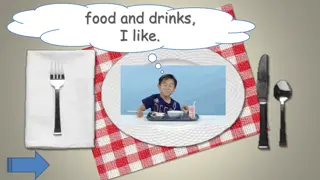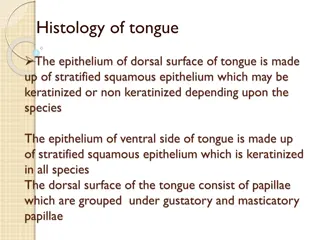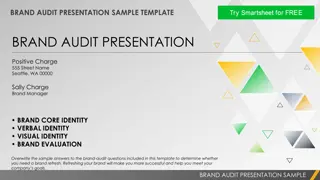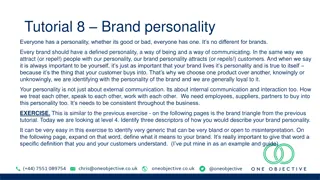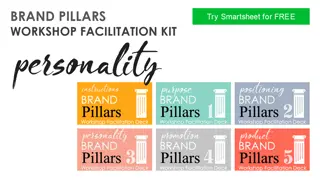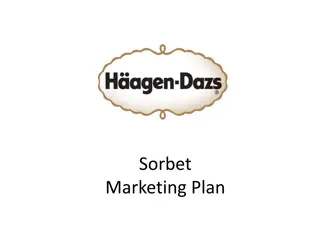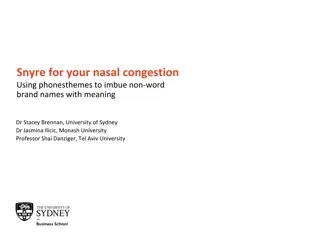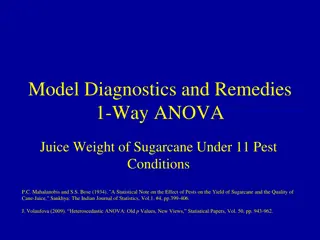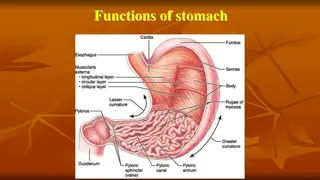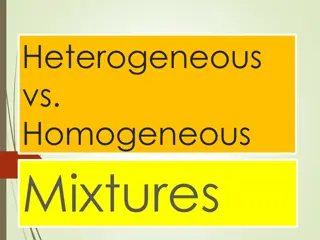Investigating Brand Image vs. Taste Influence on Peach Juice Preference
In a study exploring the impact of brand image and taste on consumer preference for peach juice, previous research comparing blind and non-blind taste tests is discussed. Minute Maid, for instance, showed varying results based on blind testing versus non-blind testing, indicating the effect of mass media and marketing campaigns on brand loyalty. The study involves evaluating factors such as price, brand, taste, and package design to determine their influence on consumer choice. Function evaluations and statistical analysis using an Ordered Logit model are utilized to assess these factors.
Download Presentation

Please find below an Image/Link to download the presentation.
The content on the website is provided AS IS for your information and personal use only. It may not be sold, licensed, or shared on other websites without obtaining consent from the author. Download presentation by click this link. If you encounter any issues during the download, it is possible that the publisher has removed the file from their server.
E N D
Presentation Transcript
Brand Effect on Customer IDIL OBEN GIRGIN
1)Favorite _____ Second Favorite _____ Third Favorite _____ Fourth Favorite _____ Least Favorite _____
The research question that will be investigated in the study is whether brand image or taste has more influence over brand preference in peach juice for our class.
Previous Studies Previous studies try to compare blind versus non-blind taste tests.One great example is an experiment comparing store brand orange juice to national brand,Minute Maid.
Minute Maid scored highest during the non- blind test,but during blind test,Minute Maid was the least preferred orange juice. This shows that Minute Maid s use of mass- media and national marketing campaign creates this brand loyalty and perception of quality.
number of columns = 17 number of variables: 17 number of non-blank lines: 17
Price Brand Taste Color Package 2.9375 2.5000 1.0000 5.0000 2.8750 3.0000 2.0000 5.0000 1.2500 1.0000 1.0000 4.0000 4.0625 4.5000 1.0000 5.0000 4.0625 4.0000 2.0000 5.0000 Std. Dev. C.V. Skewness Ex. kurtosis 1.3401 0.45620 0.63099 -0.97401 0.71880 0.25002 1.2862 3.0572 0.77460 0.61968 3.1111 8.3704 1.2894 0.31739 -1.2745 0.35333 Package 0.77190 0.19001 -0.99998 1.4989 Price Brand Taste Color IQ range Missing obs. 2.5000 0 0.75000 0 0.0000 0 1.0000 0 0.75000 0 Price Brand Taste Color Package
Function evaluations: 64 Evaluations of gradient: 28 Model 2: Ordered Logit, using observations 1-16 Dependent variable: T_Cappy Standard errors based on Hessian coefficient std. error ------------------------------------------------------- Price 0.210557 0.615432 0.3421 0.7323 Brand 1.47478 0.938128 1.572 0.1159 Taste 0.132213 0.971868 0.1360 0.8918 Color 0.424768 0.742594 0.5720 0.5673 Package 0.425261 0.918889 0.4628 0.6435 z p-value cut1 8.17455 9.27055 0.8818 0.3779 cut2 6.46700 9.20906 0.7022 0.4825 cut3 5.07715 9.16314 0.5541 0.5795 cut4 3.84432 9.07510 0.4236 0.6718 Mean dependent var 3.500000 S.D. dependent var 1.316561 Log-likelihood 21.35270 Akaike criterion Schwarz criterion 67.65870 Hannan-Quinn 60.70541 61.06147 Number of cases 'correctly predicted' = 10 (62.5%) Likelihood ratio test: Chi-square(5) = 8.68307 [0.1224]
Function evaluations: 63 Evaluations of gradient: 36 Model 3: Ordered Logit, using observations 1-16 Dependent variable: B_Cappy Standard errors based on Hessian coefficient std. error --------------------------------------------------------- Price 1.48847 0.910693 1.634 0.1022 Brand 0.191302 0.811833 0.2356 0.8137 Taste 0.706140 1.05483 0.6694 0.5032 Color 1.21853 0.929690 1.311 0.1900 Package 2.31351 1.36588 1.694 0.0903 * z p-value cut1 1.54047 8.76758 0.1757 0.8605 cut2 1.11605 8.77222 0.1272 0.8988 cut3 0.0538760 8.74548 0.006160 0.9951 cut4 1.37631 8.72687 0.1577 0.8747 Mean dependent var 2.500000 S.D. dependent var 1.549193 Log-likelihood 19.15281 Akaike criterion Schwarz criterion 63.25892 Hannan-Quinn 56.30562 56.66169 Number of cases 'correctly predicted' = 9 (56.2%) Likelihood ratio test: Chi-square(5) = 9.25783 [0.0992]
Function evaluations: 57 Evaluations of gradient: 34 Model 4: Ordered Logit, using observations 1-16 Dependent variable: T_Jucy Standard errors based on Hessian coefficient std. error ------------------------------------------------------- Price 1.40664 0.800170 1.758 0.0788 * Brand 2.14640 1.14920 1.868 0.0618 * Taste 1.00320 1.48628 0.6750 0.4997 Color 0.361273 0.836353 0.4320 0.6658 Package 1.00843 1.07487 0.9382 0.3481 z p-value cut1 7.29488 9.72338 0.7502 0.4531 cut2 7.70950 9.74131 0.7914 0.4287 cut3 9.80887 9.95493 0.9853 0.3245 cut4 11.9482 10.1542 1.177 0.2393 Mean dependent var 2.875000 S.D. dependent var 1.543805 Log-likelihood 17.79837 Akaike criterion Schwarz criterion 60.55004 Hannan-Quinn 53.59674 53.95281 Number of cases 'correctly predicted' = 12 (75.0%) Likelihood ratio test: Chi-square(5) = 14.8988 [0.0108]
Taste jucy-Taste Function evaluations: 20 Evaluations of gradient: 11 Model 6: Ordered Logit, using observations 1-16 Dependent variable: T_Jucy Standard errors based on Hessian coefficient std. error ------------------------------------------------------ Taste 1.03976 0.786360 1.322 0.1861 z p-value cut1 0.431153 1.05069 0.4104 0.6815 cut2 0.712576 1.04178 0.6840 0.4940 cut3 1.74926 1.05445 1.659 0.0971 * cut4 2.84525 1.22599 2.321 0.0203 ** Mean dependent var 2.875000 S.D. dependent var 1.543805 Log-likelihood 23.07293 Akaike criterion Schwarz criterion 60.00880 Hannan-Quinn 56.14585 56.34367 Number of cases 'correctly predicted' = 6 (37.5%) Likelihood ratio test: Chi-square(1) = 4.34965 [0.0370]
Brand cappy-taste&brand Function evaluations: 26 Evaluations of gradient: 13 Model 7: Ordered Logit, using observations 1-16 Dependent variable: B_Cappy Standard errors based on Hessian coefficient std. error --------------------------------------------------------- Taste 0.350274 0.531831 0.6586 0.5101 Brand 0.0549692 0.575271 0.09555 0.9239 z p-value cut1 0.0139159 1.90333 0.007311 0.9942 cut2 0.269974 1.90646 0.1416 0.8874 cut3 1.10115 1.88663 0.5837 0.5594 cut4 2.29725 1.95734 1.174 0.2405 Mean dependent var 2.500000 S.D. dependent var 1.549193 Log-likelihood 22.55404 Akaike criterion Schwarz criterion 61.74361 Hannan-Quinn 57.10807 57.34545 Number of cases 'correctly predicted' = 8 (50.0%) Likelihood ratio test: Chi-square(2) = 2.45538 [0.2930]
Consistency Model 8: Logit, using observations 1-16 Dependent variable: Same Standard errors based on Hessian coefficient std. error ---------------------------------------------------------- const 14.1583 9759.34 0.001451 0.9988 Taste 17.9010 9759.34 0.001834 0.9985 Brand 1.09055 0.972495 1.121 0.2621 z p-value Mean dependent var 0.312500 S.D. dependent var 0.478714 McFadden R-squared 0.167914 Adjusted R-squared -0.133977 Log-likelihood 8.268760 Akaike criterion Schwarz criterion 24.85529 Hannan-Quinn 22.53752 22.65621 Number of cases 'correctly predicted' = 12 (75.0%) f(beta'x) at mean of independent vars = 0.006 Likelihood ratio test: Chi-square(2) = 3.33724 [0.1885] Predicted 0 1 Actual 0 11 0 1 4 1
Conclusion: In these studies it has been shown that brand image does have an important effect on preferences.


